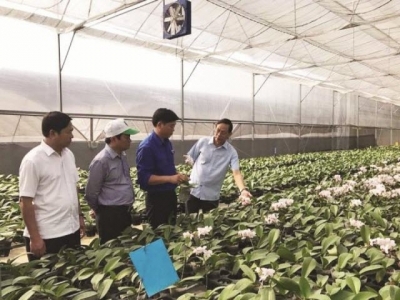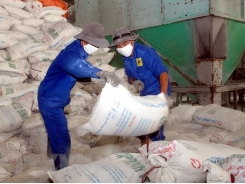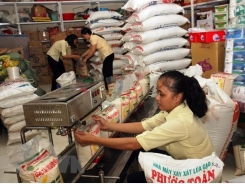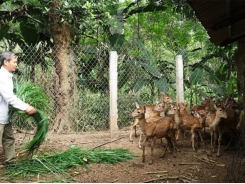Flower exporting: not yet big

Although there are many advantages to developing flower production for both domestic and export markets. The constraints on development policies, especially the inherent difficulties in seed sources have not pushed the industry to be as "big" as expected.
The State should have more preferential policies for domestic flower industry to develop, improve competitiveness. Picture: N.Anh.
The struggling source of seed
Vietnam is considered a country with many advantages in flower production and export, especially Dalat (Lam Dong). Talking to reporters of Customs newspaper, Mr Phan Thanh Sang, Chairman of Da Lat Flower Association said: Last time, the Da Lat flower export situation was quite positive. The export markets are: Holland, Belgium, China, Japan, Indonesia ... However, the important thing is good export performance and mainly thanks to FDI enterprises, these enterprises always own new varieties of high quality, and have a stable consumption market.
"Most of the remaining Vietnamese enterprises are private enterprises, the investment has not been done with the old seed sources or unlicensed varieties. The international market has no need for these varieties. When participating in the national market, it is compulsory for export varieties to have a license. In Da Lat, most of the farmers grow old flower varieties, so they are not allowed to export. This raises the issue, if we want to export, it is imperative to focus on large companies to import licensed flowers, then plant and export. These processes also raise costs, " Mr Sang said.
While the advantages of flower export belong to FDI enterprises, it is not easy to compete in the domestic market. According to Mr Sang, in the country, flowers are mainly sold in the holidays, and sometimes, flowers at the clue market are stagnant and become redundant.
Meanwhile, every Tet holiday the volume of flowers imported from other countries to Vietnam, both by non-quota and official category are very large and the "best selling", proving the large domestic demand. Mr Sang explained the cause of this issue: "The most important thing is that Vietnamese customers are changing. They like new varieties of flowers, ensured durability, big flowers, of high quality and long lasting.
Meanwhile, the flower sector of Vietnam goes after other countries, does not actively produce diverse, high quality varieties. The traditional flowers and ornamental plants do not meet demands. Typically, during the Lunar New Year, Vietnamese traditional flowers such as apricot, peach, kumquat, are competitively priced, but have reduced in sales volume. Facing this situation, producers have to change to meet market’s demand, " Mr Sang said.
Raise internal force for domestic enterprises
In the immediate future, according to Sang, when it is not possible to own new varieties of high quality to increase competitiveness of Vietnamese flowers in both domestic and export markets, the key solution is to import good varieties. "The import of new, high quality varieties will help the flower growers reduce the area of growing old flowers, gradually changing to serve domestic demand, and for export. It is important to find varieties that are suitable for Vietnamese climatic conditions and have competitive advantages. If the weather is good, businesses do not have to invest in modern greenhouses as is the case abroad, making it simpler and cheaper. Some countries and regions such as Malaysia, Taiwan, ... growing flower in greenhouses is quite simple, but high quality flowers for exporting are at relatively high prices, Mr Sang said.
However, importing new varieties does not seem easy either. According to Mr Sang, some new flower products at high-end flower shops are still imported, but if the seeds and seedlings of such flowers are imported, enterprises meet certain barriers. Specifically, new varieties imported in the country must be quarantined, checked for source ... and this takes a long time. While in other countries, large enterprises’ seed production control is quite strict. These import enterprises want imported flower varieties to be applied according to international business principles to create maximum advantage.
In the long term, some experts said that the assessment of the Vietnamese flower industry in the country shows that it has not developed or looked at the fundamental internal forces affecting domestic enterprises, and just focuses on foreign firms. So the most important solution is that the State must have mechanisms and policies to improve internal resources for enterprises, such as solutions to support businesses in terms of interest rates, loans, collateral .... Agreeing with this view, Mr Sang pointed out: Foreign enterprises investing in the flower industry are borrowing in their country with low interest rates. Besides, the required investment to grow high quality flowers using high technology greenhouse systems, is quite large, about 2-3 billion / 1.000m2. Overseas, these are considered as collateral for bank loans, allowing businesses to continue borrowing. For example, if a greenhouse is worth 2 billion VND, a bank will lend about 70%, and with property value appreciating over a certain period of time, the borrowed amount depreciates, allowing further collateral loans. However, in Vietnam, these types of property are not considered collateral.
"Planting flowers is the development of high-tech agriculture. Policy mechanisms are not sufficient and not suitable for developing high-tech agriculture when enterprises have to invest assets on high-value land. The state should have incentive policies for businesses with capital to reinvest, " Mr Sang said.
Answering the question by the Customs Newspaper’s reporter about the orientation and solution of the management agency to promote the development of Vietnam's flower industry in the coming time, especially in Lam Dong, Mr Le Van Duc, Deputy Director General of the Department Cultivation (MARD), said that the agricultural sector will focus on researching about importing, cross-breeding, selection, licensing and seedling protection to create good seed sources for production; Besides researching, completing technological processes and applying hi-tech in production; Applying safe production processes to produce high quality flowers with equal quality. "The key solution is to increase in applying post harvest technology (handling, post harvest handling, transport) with each group and each type of product according to the market requirements to improve the quality of flowers. At the same time, developing the brand name, flower chain of Lam Dong province and attract domestic and international investment and trade promotion," Mr Duc said.
Có thể bạn quan tâm
Phần mềm

Phối trộn thức ăn chăn nuôi

Pha dung dịch thủy canh

Định mức cho tôm ăn

Phối trộn phân bón NPK

Xác định tỷ lệ tôm sống

Chuyển đổi đơn vị phân bón

Xác định công suất sục khí

Chuyển đổi đơn vị tôm

Tính diện tích nhà kính

Tính thể tích ao hồ



 Sustainable agriculture transformation project reviewed
Sustainable agriculture transformation project reviewed  Deer farming improve lives of farmers in Ha…
Deer farming improve lives of farmers in Ha…